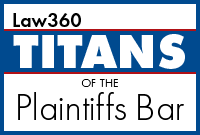
Market Manipulation Examples
Examples of Market Manipulation
Market manipulation takes a variety of forms, including:
- Churning – when a trader places both buy and sell orders at the same price. The intent is to churn up the trade volume, making the stock look more interesting to other investors, and thereby increase the price.
- Painting the Tape – when a group of traders creates activity or rumors to drive up the price of a stock (also referred to as “Runs” or “Ramping”).
- Wash trading – selling and re-purchasing the same security or substantially the same security to generate activity and increase the price.
- Bear raiding – attempting to push down the price of a stock by heavy selling or short selling.
- Cornering (the market) – purchasing enough of a particular stock, commodity, or other asset to gain control of the supply and be able to set the price for it.
- Insider Trading – when insiders with important confidential information about a company take advantage of that knowledge to make a profit or avoid losses by buying or selling their own shares of the stock.
Market Manipulation Lawsuit Examples
Example 1: J.P. Morgan Chase/HSBC Market Manipulation Lawsuit
Attorneys associated with Gibbs Mura represented investors in a class action lawsuit against J.P. Morgan Chase & Co. and HSBC, alleging that the banks violated antitrust laws by manipulating the prices of silver futures and option contracts. The class action alleges that J.P. Morgan and HSBC manipulated the market by making large, coordinated trades to artificially lower the price of silver. By depressing the price of silver, these banks made substantial illegal profits while harming investors and restraining competition, according to the class action lawsuit.
Example 2: Montgomery Street Research Wash Trading Lawsuit
In late 2014, the Securities and Exchange Commission (SEC) brought an enforcement action an equity firm Montgomery Street Research. The firm’s owner allegedly manipulated the market for a publicly traded stock for which he was soliciting investors.
After a company hired Montgomery to assist in two private placement offerings, the firm owner allegedly engaged in wash trading, which involves the near-simultaneous purchase and sale of a security to make it appear actively traded, without any actual change in ownership of the securities. The SEC alleged that Montgomery conducted approximately 100 wash trades where the sell order came within 90 seconds of the buy order for the securities. The price and quantity of securities bought and sold was nearly identical for all buys and sells, says the SEC. The stock was otherwise rarely traded.
Thomas Krysa, an Associate Director of Enforcement at the SEC, explains that wash trading obscures whether there is truly market interest in the stock:
“Wash trading is an abusive practice that misleads the market about the genuine supply and demand for a stock.”
Utilizing wash trading, the SEC says that Montgomery Street Research raised more than $2.5 million from investors.
SEC Whistleblowers Can Report Market Manipulation
Gibbs Mura encourages persons who know about possible securities violation to contact the firm. Under the SEC whistleblower laws created by the Dodd-Frank Wall Street Reform and Consumer Protection Act, whistleblowers may be receive a reward of up to 30 percent of the recovery from a successful Securities and Exchange Commission (SEC) enforcement action based on the whistleblower’s inside information. If you believe that you have information about a securities violation, please contact us.
About Us
Gibbs Mura is a California-based law firm committed to protecting the rights of clients nationwide who have been harmed by corporate misconduct. We represent individuals, whistleblowers, employees, and small businesses across the U.S. against the world’s largest corporations. Our award-winning lawyers have achieved landmark recoveries and over a billion dollars for our clients in high-stakes class action and individual cases involving consumer protection, data breach, digital privacy, and federal and California employment lawsuits. Our attorneys have received numerous honors for their work, including “Top Plaintiff Lawyers in California,” “Top Class Action Attorneys Under 40,” “Consumer Protection MVP,” “Best Lawyers in America,” and “Top Cybersecurity/ Privacy Attorneys Under 40.”Our Cases and Investigations
Ask a question




